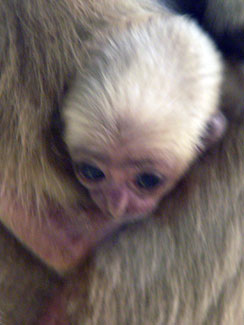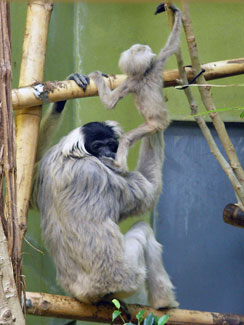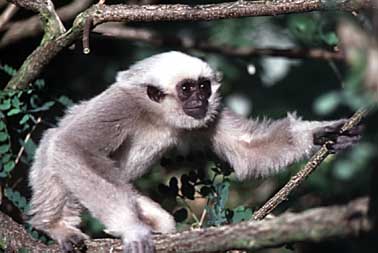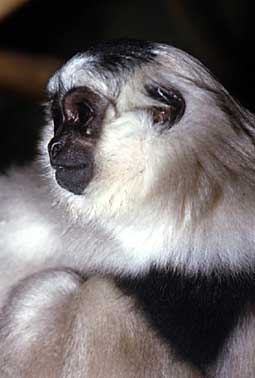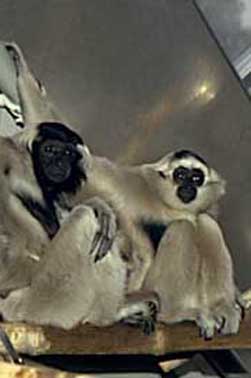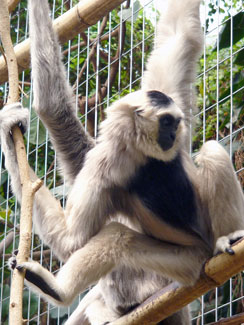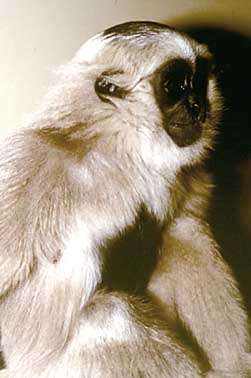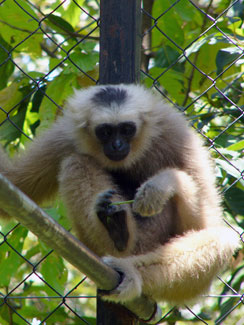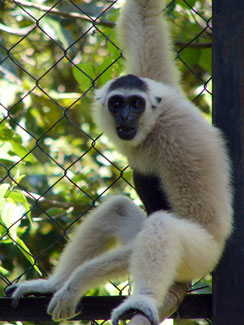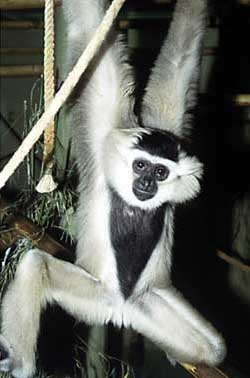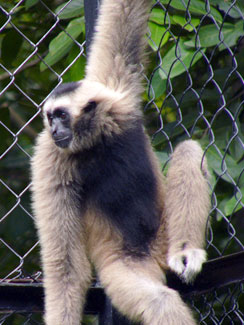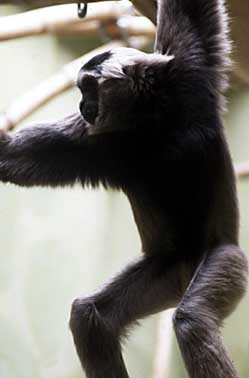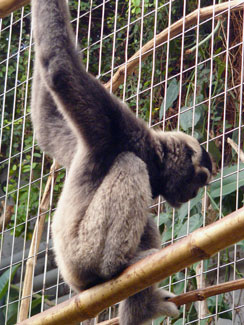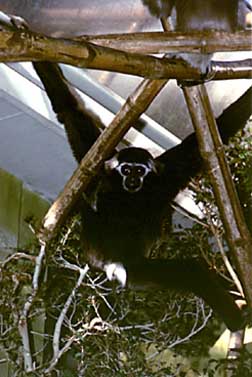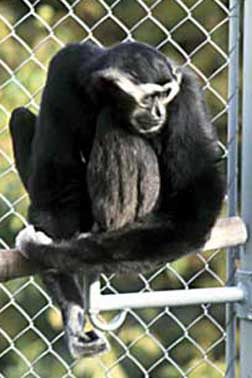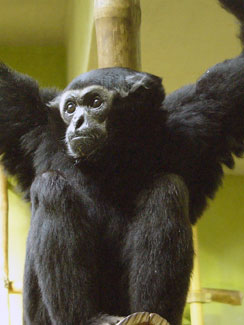 |
||
| Adult male "Iaman", Zürich Zoo, Switzerland,
13 Aug. 2007. This old male's face ring is strongly reduced, when compared to the photographs made 20 years earlier of the same male (see further below). |
||
 |
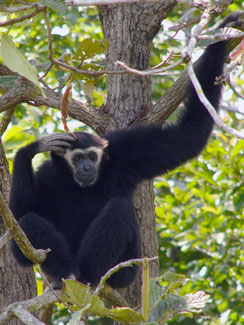 |
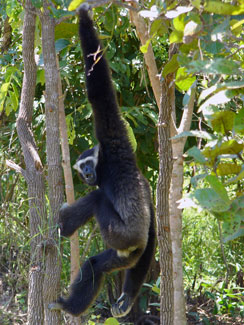 |
| Adult male, Phnom Tamao Zoo, Cambodia, 13 Sept. 2006. This male still retains a broad face ring and a broad corona, suggesting that he may be young adult. |
Adult male, Phnom Tamao Zoo, Cambodia, 14 Sept. 2006. | Adult male, Phnom Tamao Zoo, Cambodia, 15 Sept. 2006. This male still retains a gray lower back, suggesting that he may be young adult. |
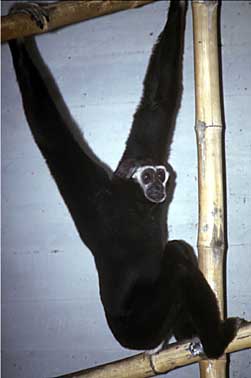 |
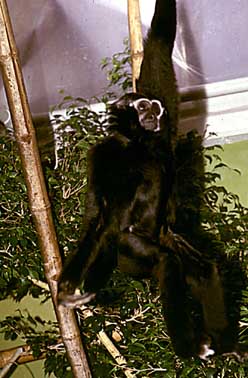 |
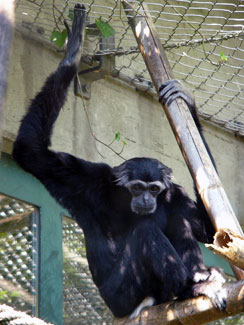 |
| Adult male, probably "Iaman", Zürich
Zoo, Switzerland, 28 Oct. 1987. On this photograph, the white genital tuft, which is typical of adult males of this species, is visible. |
Adult male "Iaman", Zürich Zoo, Switzerland, 17 Nov. 1987. | Adult male "Khmer", Zürich Zoo, Switzerland, 30 July 2006. |
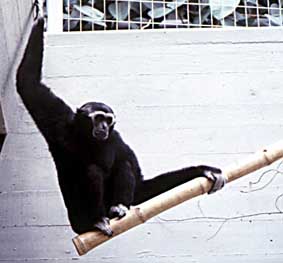 |
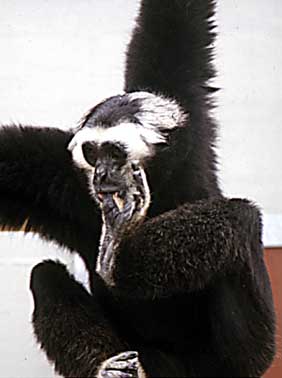 |
|
| Adult male "Blacky", Zürich Zoo, Switzerland,
28 April 1982. Notice the grey corona, the light digits and the white genital tuft of this sexually dichromatic species. |
Adult male "Itam", Zürich Zoo, Switzerland,
3 Nov. 1983. This male exhibits a particularly broad and light corona and also has some grey hairs on the lower back and on the distal leg. This is part of the normal variability of this species. The male shown here is fully adult and not a hybrid with H. lar (Geissmann, unpublished vocal data). |
|
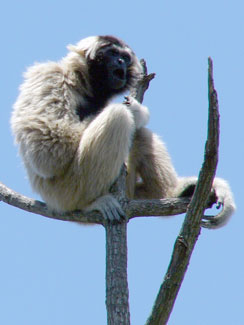 |
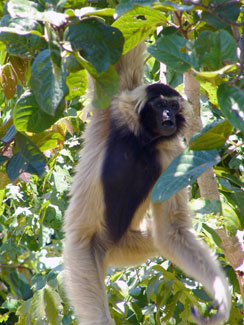 |
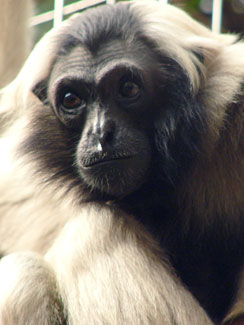 |
| Adult female, Phnom Tamao Zoo, Cambodia, 15 Sept. 2006. Calling. | Adult female, Phnom Tamao Zoo, Cambodia, 15 Sept. 2006.
Same female as in previous photograph, still calling. Notice the contrasting black cap and ventral field, and light temple fringes hanging down over the black cheek region and ears. |
Adult male "Willow", Zürich Zoo, Switzerland,
13 Aug. 2007. Adult female pileated gibbons often develop a bald forehead. |
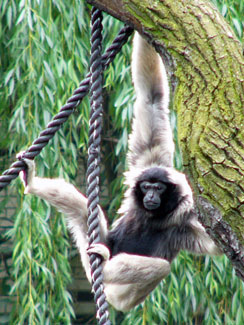 |
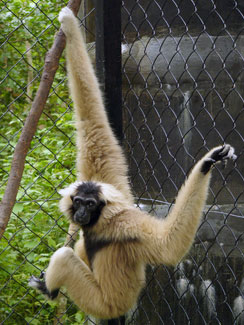 |
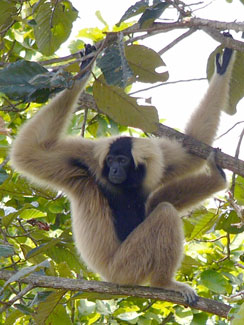 |
| Adult female, Berlin Zoo, Germany, 08 July 2005. | Adult female, Phnom Tamao Zoo, Cambodia, 13 Sept. 2006. | Adult female, Phnom Tamao Zoo, Cambodia, 14 Sept. 2006. |
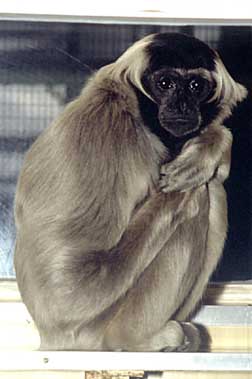 |
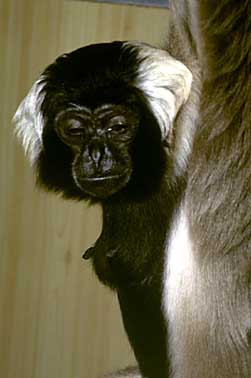 |
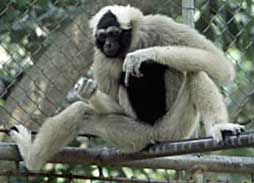 |
| Adult female "Marijke", Twycross Zoo, United Kingdom, 6 Oct. 1988. | Adult female "Elf", Twycross Zoo, United
Kingdom, 4 Oct. 1988. This female exhibits only traces of a white brow band. It is possible that the reduction of the brow band in female pileated gibbons correlates with age. |
Adult female, Dusit Zoo, Bangkok, Thailand, 30 March 1999. |
 |
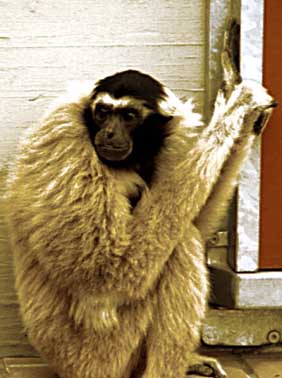 |
 |
| Adult female "Iok", Zürich Zoo, Switzerland, 30 Aug. 1989. | Adult female "Iok", Zürich Zoo, Switzerland, 3 Nov. 1983. | Adult female "Grey", Zürich Zoo, Switzerland, 25 Aug. 1984. |
